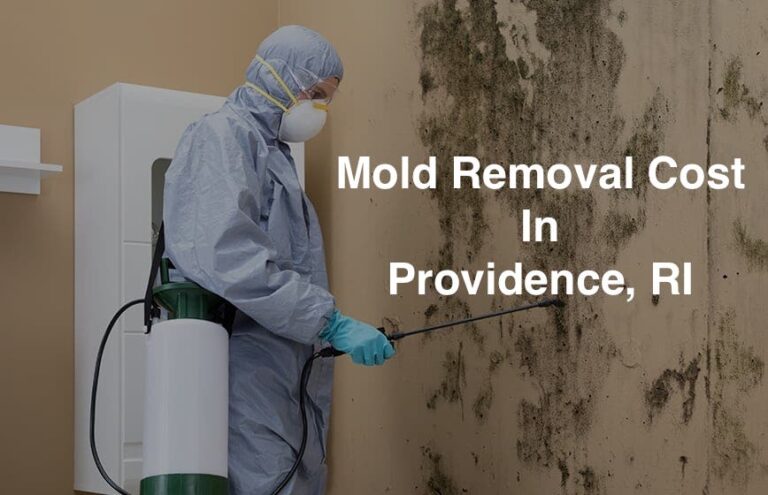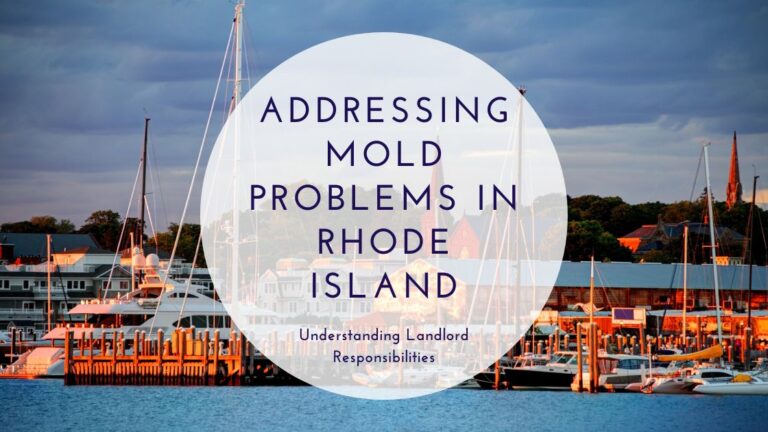Anyone who’s lived in the beautiful Ocean State knows we’ve got more than our fair share of humidity, and with that comes the unwelcome guest many homeowners dread – mold. Understanding the causes and solutions for mold in Rhode Island homes is critical not just for the integrity of our homes but also for the health of our families.
What is Mold?

Mold is a type of fungus that thrives in moist conditions. There are thousands of species of mold, but in homes, you’ll commonly encounter black mold (Stachybotrys chartarum), Cladosporium, Penicillium, Aspergillus, and Alternaria. These molds can cause structural damage and can also be hazardous to health.
Causes of Mold in Rhode Island Homes
The causes of mold are multifaceted and can be influenced by a range of environmental, geographical, and structural factors. In Rhode Island, these elements often conspire to create ideal conditions for mold growth.
Humidity and Weather Conditions
A key catalyst for mold growth is moisture, and Rhode Island’s unique climate contributes significantly to this. Our state experiences high levels of humidity, with average levels around 70% and peaks of over 90% during the summer months. This humidity is driven by our coastal location, and the significant rainfall we receive throughout the year, particularly in late summer and fall, adds to this.
Home Construction and Maintenance Issues
In addition to the natural climate, home construction and maintenance issues can also lead to mold growth. These include:
- Leaking Pipes: Undetected leaks can cause water to accumulate in hidden areas, creating a perfect environment for mold.
- Roof Leaks: Similarly, a leaking roof can allow moisture to enter the home, particularly into attic spaces where it’s less likely to be noticed immediately.
- Condensation: In the cold Rhode Island winters, condensation can form on windows, walls, and other cold surfaces. This can often go unnoticed until mold begins to form.
- Damp Basements: Basements, especially if they are not properly ventilated or waterproofed, can become damp and promote mold growth.
Lack of Ventilation
A lack of proper ventilation can also contribute to the growth of mold. Areas like bathrooms and kitchens, where warm, moist air is frequently generated, need to be well-ventilated to prevent condensation and dampness that can lead to mold.
Flooding
Flooding, whether from extreme weather events or internal issues like burst pipes, can also lead to mold problems if the cleanup is not thorough and swift.
One study from the Indoor Environment Group at the Lawrence Berkeley National Laboratory found that approximately 50% of homes in the Northeast have dampness or mold problems, which highlights the significance of these causes.
Understanding these causes is the first step toward preventing and resolving mold issues. Remember, if you suspect a mold issue in your home, it’s always best to consult with a professional like MoldAway RI to identify the problem and find the most effective solution.
Solutions for Mold Problems
When it comes to mold problems in your home, you need reliable solutions that not only tackle the present issue but also help to prevent future recurrences. Here’s a deeper look at various methods to deal with mold effectively.
DIY Solutions
For minor mold issues, DIY solutions can sometimes be effective. These typically involve household items like vinegar, bleach, or commercial mold removers. It’s important to keep in mind that these methods are generally suitable for non-porous surfaces and small mold outbreaks.
- Vinegar: White distilled vinegar is mildly acidic and can kill 82% of mold species. To use this method, spray vinegar onto the moldy surface, leave it for an hour, and then wipe and rinse the area.
- Bleach: Bleach can kill mold on non-porous surfaces. However, it may not fully penetrate porous materials, meaning mold roots could remain and regrow.
- Commercial Mold Removers: Various commercial products are available that are designed to kill mold. Always follow the manufacturer’s instructions when using these.
Professional Mold Removal
While minor mold issues can be tackled with DIY methods, a significant infestation requires professional attention. This ensures that mold is not only removed thoroughly but also safely, without spreading spores throughout the home. Professionals like MoldAway RI employ a multi-step approach:
- Inspection: Professionals begin with a comprehensive mold inspection to identify the extent of the mold issue. This often involves state-of-the-art equipment like infrared cameras and moisture meters.
- Mold Testing: If needed, mold testing can be conducted to identify the type of mold and the degree of infestation.
- Mold Remediation: The professional team will then develop a custom mold remediation plan. This typically involves isolating the affected area, removing contaminated materials, cleaning the area with specialized products, and drying the area thoroughly.
- Restoration: Post-remediation, any damage caused during the process, such as removal of drywall or carpet, is repaired.
- Prevention Measures: Finally, the team will provide guidance on measures to prevent future mold growth.
Preventing Mold Recurrence
The most effective solution for mold problems is preventing them in the first place. This includes maintaining lower indoor humidity (ideally, below 60%), ensuring proper ventilation, promptly repairing leaks, using dehumidifiers in particularly damp spaces like basements, and installing mold-resistant products and materials in your home.
No matter the size or complexity of the mold issue, remember that acting quickly is crucial. MoldAway RI is equipped to handle all your mold concerns, ensuring that your home stays safe, healthy, and mold-free.
Preventing Future Mold Growth
Prevention is better than a cure. Ensure good ventilation in your home, promptly repair leaks, and control humidity levels to prevent mold. Regular inspections are also key to detecting and addressing potential mold problems early.
Health Risks of Mold in Homes
Exposure to mold can lead to numerous health problems. These include allergic reactions, asthma attacks, and even more serious conditions like chronic obstructive pulmonary disorder. It’s even more crucial for children, the elderly, and people with pre-existing respiratory conditions to live in a mold-free environment.
Signs of Mold Infestation in Your Home
Visible signs of mold include discoloration on walls, ceilings, and baseboards. Sometimes, though, mold lurks out of sight – behind walls or under carpets. Non-visible signs of a mold infestation include a persistent musty odor and unexplained health symptoms like persistent coughing, sneezing, or headaches.
Professional Mold Inspection and Testing
Identifying mold can be tricky. That’s where professional services like MoldAway RI come in. A professional mold inspection can uncover hidden mold and identify the extent of the issue. This can be vital in forming an effective plan for mold removal.
Conclusion
Being informed about mold, its causes, and solutions can help you keep your Rhode Island home safe and healthy. If you suspect a mold issue, don’t hesitate to reach out to us at MoldAway RI for a professional consultation.






